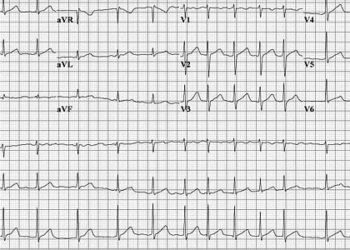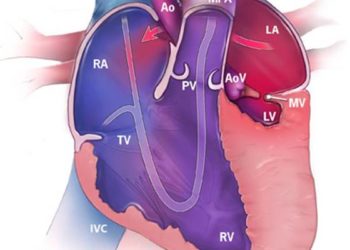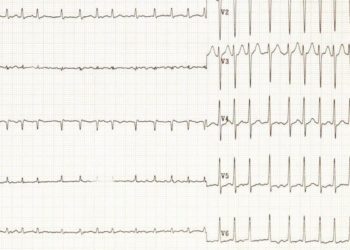2 Minute Medicine Rewind – December 2 – 8th, 2013
Image: PD
In this section, we will highlight the key high-impact studies, updates, and analyses published in medicine during the past week.
Miscommunication during patient handoffs is a leading cause of medical errors. In this prospective study involving 84 residents in two inpatient units at Boston Children’s hospital, residents from before the intervention were compared to those who received the intervention of a resident handoff bundle which consisted of standardized communication, a handoff training session, a verbal mnemonic, and formalized structure for unified team handoffs. Investigators found that after implementation of the intervention, medical errors dropped from 33.8 per 100 admissions (95% CI, 27.3-40.3) to 18.3 per 100 admissions (95% CI 14.7-21.9; p < .001), and preventable adverse events were lowered from 3.3 per 100 admissions (95% CI 1.7-4.8) to 1.5 (95% CI 0.51-2.4) per 100 admissions (p= .04). Resident workflow was not significantly changed with physicians spending a greater percentage of time at the patient bedside 8.3% (95% CI 7.1%-9.8%) vs. 10.6% (95% CI 9.2%-12.2%, p = .03) and handoff durations staying constant. This study demonstrates that implementation of a specific set of handoff procedures resulted in significant reduction in medical errors and preventable adverse events.
Compression stockings to prevent post-thrombotic syndrome: a randomised placebo-controlled trial
Elastic compression stockings (ECS) are routinely used for preventing post-thrombotic syndrome (PTS) after deep venous thrombosis (DVT). However, their efficacy has yet to be thoroughly assessed. In this randomized controlled trial of individuals who had had their first proximal DVT, 410 patients were randomly assigned to receive ECS and 396 patients were assigned to placebo stockings. The incidence of PTS was 14.2% in the intervention group vs. 12.7% in the placebo group (HR 1.13, 95% CI 0.73 – 1.76, p = 0.58). This study therefore showed that ECS did not appear to prevent PTS after a first proximal DVT.
Atrial Ectopy as a Predictor of Incident Atrial Fibrillation: A Cohort Study
Premature atrial contractions (PACs) are known to initiate episodes of atrial fibrillation (AF) and are thought to play a part in the pathogenesis of AF as a chronic condition. Previously, there have been few validated models for predicting an individual’s risk for developing AF. In this cohort study, investigators analyzed a random subset of 1260 patients from the Cardiovascular Health Study (1989-1990) to look for an association between PAC count and development of AF. Investigators found that with the resulting model, increasing the hourly PAC count two times was associated with a significant increase in risk of AF (HR 1.17, 95% CI 1.13-1.22, p < 0.001) as well as overall mortality (HR 1.06, 95% CI 1.03-1.09, p < 0.001). The PAC count had a similar ability to predict risk as the Framingham model for AF at 5 and 10 years and was better than the Framingham model for predicting AF risk at 15 years. This study therefore suggests that PAC count may be an important part for a future AF risk model.
Major advances in cancer diagnosis and treatment have occurred since the early 2000s. This large retrospective observational study that included data from more than 10 million patients sought to quantify the impacts of these advances. Differences in cancer survival were compared for 46 cancer diagnoses from three time periods: 1999-2001, 2002-04, and 2005-07 and across 29 European countries. Investigators found that the 5-year relative survival for cancer diagnoses has generally increased for all European regions. From the 1999-2001 to 2005-07 periods, the largest improvements in survival were for prostate cancer (73·4% [95% CI 72·9- 73·9] vs. 81·7% [81·3-82·1]), non-Hodgkin lymphoma (53·8% [53·3-54·4] vs. 60·4% [60·0-60·9]), and rectal cancer (52·1% [51·6-52·6] vs 57·6% [57·1-58·1]). Cancer survival was best in northern, central, and southern Europe. The cancers with the best survival were testis, lip, thyroid, and prostate cancers. The cancers with the lowest 5-year survival rates were lung, esophagus, liver, pleura, and pancreatic cancers.
Visceral leishmaniasis continues to cause significant morbidity and mortality in resource poor countries, mostly in remote rural areas in the Indian subcontinent. Elimination efforts have been severely hampered by the lack of an effective treatment with the current primary treatment being oral miltefosine which has risks of teratogenicity, non-compliance, resistance development, and a treatment effectiveness of only 83% shown in previous trials. In this prospective feasibility study, 300 patients with confirmed cases of visceral leishmaniasis were assigned to receive a one-off intravenous infusion of liposomal amphotericin B (10 mg/kg bodyweight). In the intention-to-treat analysis, 87% of patients achieved an initial cure at day 30 and 98% of patients had achieved cure at 6 months. Adverse effects after treatment included fever (26% of patients), fever with rigors (36%), and hypotension (19%), with no patients requiring further management at a tertiary hospital for these effects. This study suggests that treatment of visceral leishmaniasis with a single-dose of liposomal amphotericin B could be a safe an effective strategy for leishmaniasis elimination programs.
By Neal Yuan and David Ouyang
© 2013 2minutemedicine.com. All rights reserved. No works may be reproduced without written consent from 2minutemedicine.com. Disclaimer: We present factual information directly from peer reviewed medical journals. No post should be construed as medical advice and is not intended as such by the authors or by 2minutemedicine.com. PLEASE SEE A HEALTHCARE PROVIDER IN YOUR AREA IF YOU SEEK MEDICAL ADVICE OF ANY SORT. Content is produced in accordance with fair use copyrights solely and strictly for the purpose of teaching, news and criticism. No benefit, monetary or otherwise, is realized by any participants or the owner of this domain.









